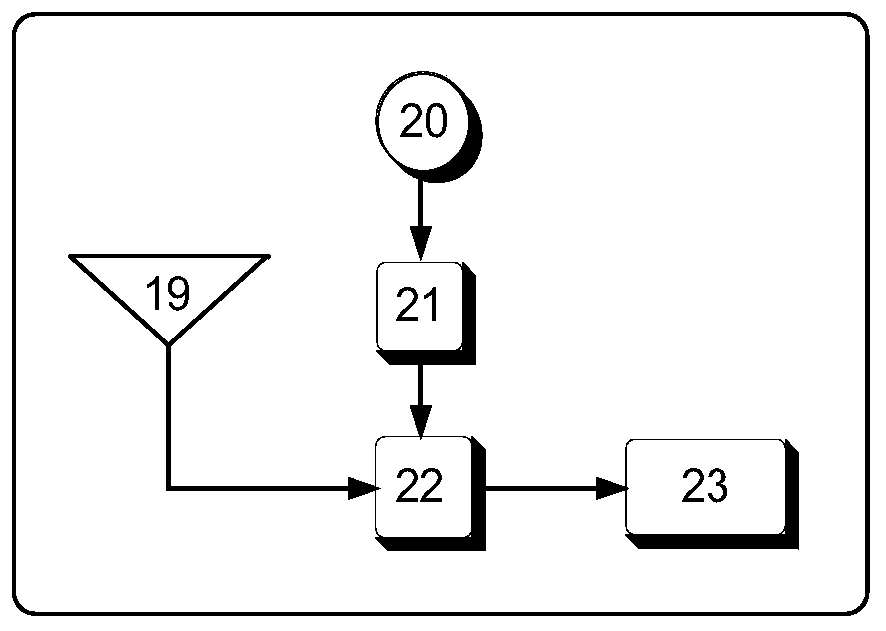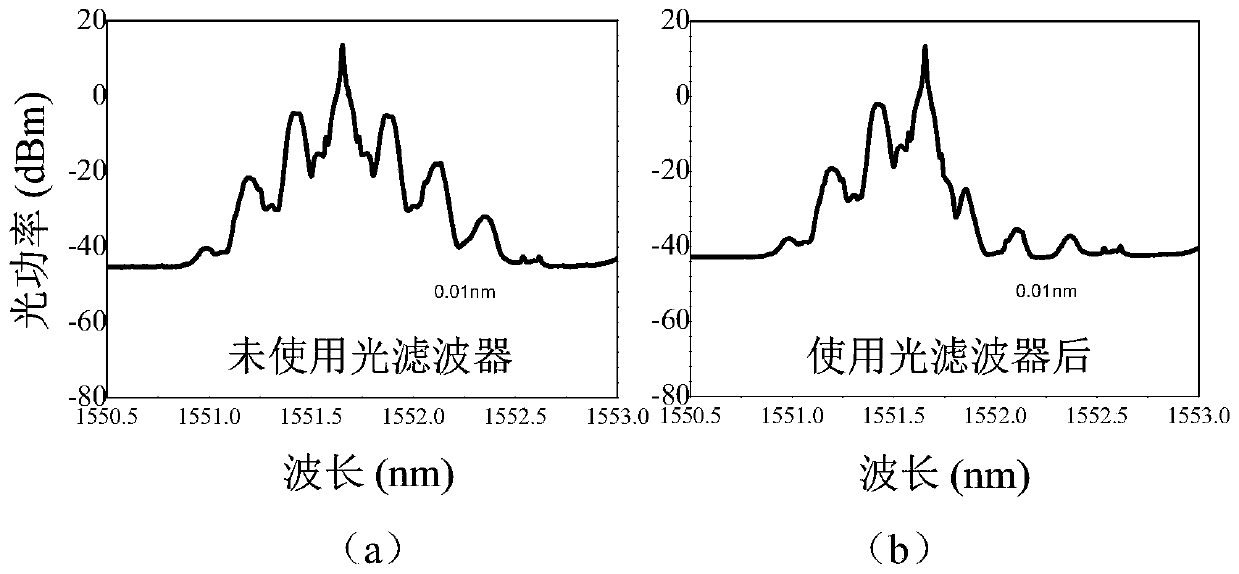Device and system for simultaneously generating wired and wireless signals by adopting dual-polarization MZM modulator
A wireless signal and modulator technology, applied in transmission systems, optical fiber radio, electromagnetic wave transmission systems, etc., can solve the problems of optical fiber transmission distance limitation, affecting system reliability, mutual interference, etc., to avoid mutual interference and avoid fiber dispersion. separation effect, high reliability effect
- Summary
- Abstract
- Description
- Claims
- Application Information
AI Technical Summary
Problems solved by technology
Method used
Image
Examples
Embodiment 1
[0036] refer to figure 1 As shown, the present embodiment provides a device that adopts a dual-polarization MZM modulator to simultaneously generate wired and wireless signals, and the device is used to generate a mixture comprising QPSK signal I road data 3, QPSK signal Q road data 4 and OOK data signal 9 The optical signal includes a millimeter wave carrier generation module, an I / Q mixer 7, a dual-polarization MZM modulator 12, an optical amplifier 13 and an optical filter 14. The millimeter wave carrier generation module is used to generate the frequency f R The millimeter wave carrier includes a connected sine generator 5 and a frequency multiplier 6 . The I / Q mixer 7 is used to load the I channel data of the QPSK signal and the Q channel data of the QPSK signal onto the millimeter wave carrier to generate a QPSK millimeter wave signal. The dual-polarization MZM modulator 12 is driven by the QPSK millimeter wave signal and the OOK baseband electrical signal, and adopts ...
Embodiment 2
[0041] Such as figure 1 As shown, this embodiment provides a communication system, including a connected central station 1 and a base station 2, the central station 1 is a device that uses a dual-polarization MZM modulator to simultaneously generate wired and wireless signals as described in Embodiment 1 . The base station 2 includes a photodiode 16, a millimeter-wave transmitting antenna 18 and a baseband receiver 17. The photodiode 16 is used to convert the mixed optical signal into a baseband signal and a millimeter-wave electrical signal; the millimeter-wave transmitting antenna 18 is used to transmit millimeter-wave electrical signals. Signal; the baseband receiver 17 is used to receive and process the baseband signal.
[0042] In this embodiment, the received optical signal is directly detected by the photodiode 16 and converted into a mixed signal of electrical baseband and electrical millimeter wave. For the electrical baseband signal, the baseband receiver 17 can be...
PUM
 Login to View More
Login to View More Abstract
Description
Claims
Application Information
 Login to View More
Login to View More - R&D
- Intellectual Property
- Life Sciences
- Materials
- Tech Scout
- Unparalleled Data Quality
- Higher Quality Content
- 60% Fewer Hallucinations
Browse by: Latest US Patents, China's latest patents, Technical Efficacy Thesaurus, Application Domain, Technology Topic, Popular Technical Reports.
© 2025 PatSnap. All rights reserved.Legal|Privacy policy|Modern Slavery Act Transparency Statement|Sitemap|About US| Contact US: help@patsnap.com



